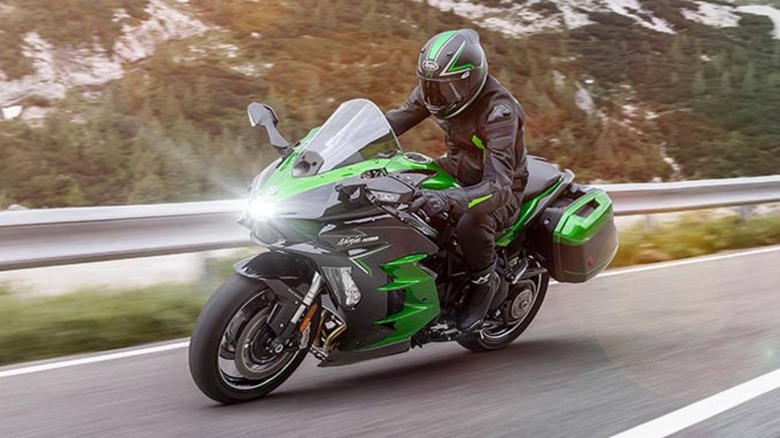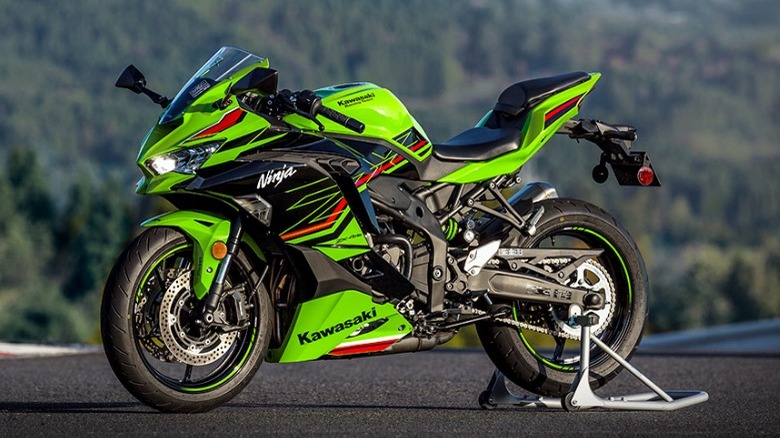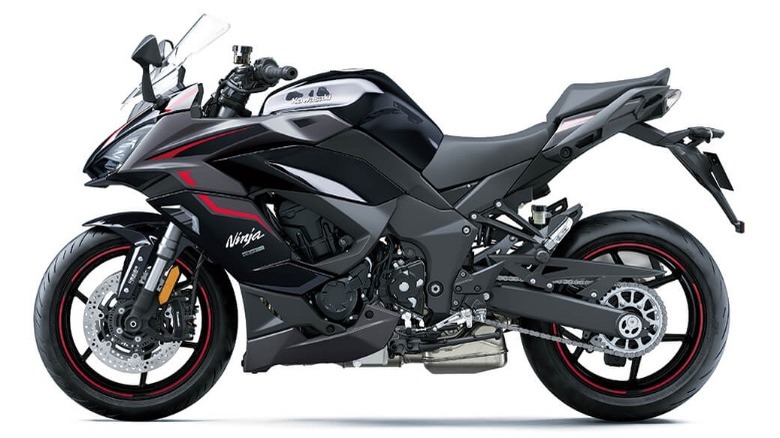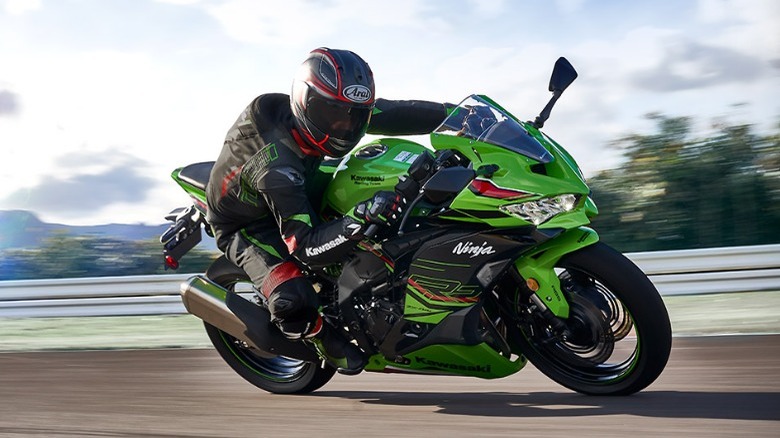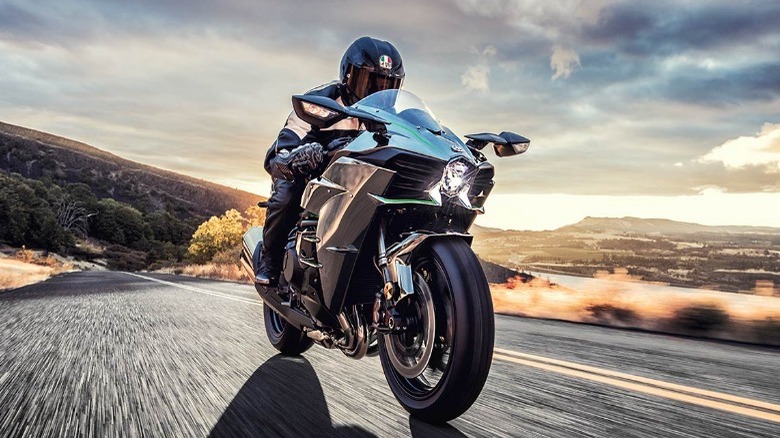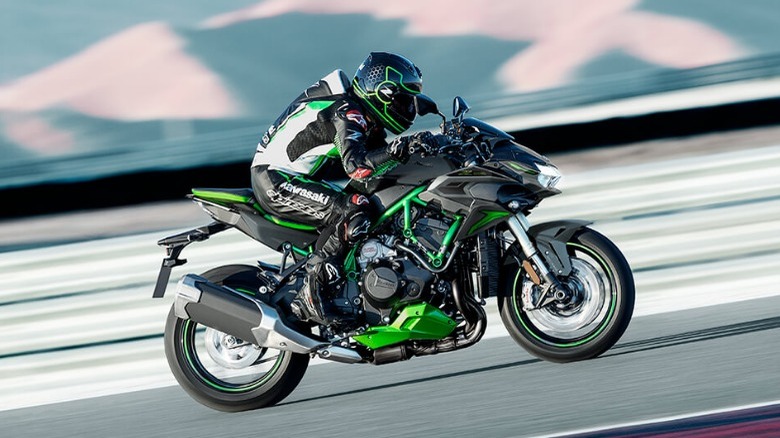Which Kawasaki Motorcycles Have A Quick Shifter And How Does It Work?
Kawasaki is one of the biggest and best motorcycle brands on the market and has been for quite a long time. Part of the way that the company has been able to maintain its foothold in such a competitive industry has been by continuing to innovate and engineer technologies that give their bikes an edge against their less-developed competition. Sometimes it can be hard to follow exactly what all of these features do, however. Like many other motorcycle manufacturers, Kawasaki loves to throw around lists of features on motorcycles without always taking the time to explain how each of these features actually work.
One such innovation is the Quick Shifter. Some riders have never even heard of this technology, while others may consider it one of the prime motivators to choose a Kawasaki over rival brands like Honda, Suzuki, and Yamaha, but it's only really compelling if you understand how it works and which bikes you'll be able to get it with. Here is a quick breakdown of what a Quick Shifter is, and which Suzuki motorcycles come with them.
What is a Quick Shifter?
The Kawasaki Quick Shifter, AKA the KQS, is a specially designed shifting mechanism that allows riders to upshift without having to engage the clutch or release the throttle. This was initially developed for racing bikes so that they could rapidly accelerate without having to ease up on the throttle while attempting to push the bike to its top speed. But while it may have started out on the race track, Kawasaki has quickly found a demand for the feature in the consumer market. So, how does it work?
According to Kawasaki, the Quick Shifter is controlled via an ECU–the same unit that controls and optimizes fuel, ignition, traction, launch, and several other engine monitoring features. The "KQS detects that the shift lever has been actuated and sends a signal to the ECU to cut ignition so that the next gear can be engaged without having to use the clutch." Some models, but not all, may also include clutchless downshifting as well. In these instances, the system will automatically lower engine speed so that the transmission can shift to the next gear down without requiring the rider to engage the clutch.
It's worth noting that not all Kawasaki riders are fans of the Quick Shifting mechanism. Some have complained that it isn't consistent, remarking that using the Quick Shifter doesn't make for as smooth or comfortable of a transition as shifting manually, especially when shifting through lower gears.
Ninja
There are quite a few different styles of motorcycle in the Kawasaki line-up but most of the sports bikes that the company makes bear the name 'Ninja.' These are then further separated into three sub-categories: The standard Ninja sport bikes, the Ninja ZX supersports, and the Ninja H2 hypersports. The basic models are light and affordable, while still tending to put performance and handling over other considerations such as comfort and gas economy. The standard sport models don't always have all of the premium features that you might find in the more expensive alternatives, but sometimes they might surprise you.
There are six Kawasaki Ninja models currently in production. Of those, the fully electric Ninja E-1 doesn't require shifting at all and the Ninja 7 Hybrid ABS which has its own unique button shifting system. Only one Ninja comes with the quick shifter: The 1000SX. This is the largest Ninja in the company's basic sport line and it's the only one to come with KQS integration. This bike has a 6-speed transmission. In addition to KQS, this transmission system has return shift functionality, electronic cruise control, and can be shifted manually with an assist and slipper clutch.
Ninja ZX 4RR ABS
Kawasaki currently has four models in the ZX supersport category. These bikes typically offer a bit more power and a few extra bells and whistles over the standard Ninja alternatives — even those with similar sized engines. There are currently three models within this subset that come stock with the Quick Shifter: The ZX-4R, ZX-6R, and ZX-10R. These bikes are all available in multiple trim options that each offer slight variations in overall feature sets. The two larger bikes all offer the KQS in every trim, but it's worth noting that not every ZX-4R has the Quick Shifter. There are four different trims that this 399cc bike comes in: The ZX-4R ABS, ZX-4RR ABS, ZX-4RR KRT Edition ABS, and the ZX-4RR 40th Anniversary Edition ABS. All of the different versions of this model that have the double-R configuration come with the Quick Shifter, while the standard ZX-4R stands alone as the only trim that does not.
All of these bikes have 6-speed transmissions with return shift functionality as well as an assist and slipper clutch. In contrast to the standard Ninjas, the ZX-14R (which is the largest ZX model) is the only one that doesn't offer the Quick Shifter. This might come as a surprise to those who expect the largest and most expensive model in the line to offer all of the features.
Ninja H2
Now it's time to move on to the truly high-end Ninja models. Kawasaki makes three different Ninja motorcycles that it has granted the 'Hypersport' designation: The H2 ABS, H2 SX SE, and the H2 R ABS. The H2's are all significantly more expensive their 1,000cc counterparts, reflecting the premium associated with top-tier performance and "supercharged engines." All three of these bikes come standard with the Quick Shifter, making this the only Ninja subcategory that has KQS across the board.
All three of the Ninja H2s have 998cc engines, though these engines aren't quite identical as they have different compression ratios and power specs. Their gear systems are fairly similar though. They all have 6-speed transmissions and return shifting functionality, like many of the other bikes in the Ninja line-up. But unlike the other Ninjas, they also utilize dog-ring gearboxes. These are designed to help even out the speed as you transition between one gear to the next. This is particularly noteworthy since it helps to offset the main complaint that riders have had with Quick Shifters -–that they don't transition speeds smoothly while shifting. The H2 SX SE is the only one of these models that comes with electronic cruise control.
Z H2
As mentioned previously, the Quick Shifter is a feature that is typically associated with racing. It exists primarily to help riders accelerate quickly, which is more of a boon on the racetrack than the roadways. So, it isn't all that surprising to see that the feature isn't available on any of Kawasaki's cruisers or touring bikes. There is one motorcycle in the manufacturer's catalogue that has KQS that isn't a Ninja, however: the Z H2.
Kawasaki classifies this bike as a 'Supercharged Hypernaked.' It's design reflects a streetfighter-like blend of performance and road-ready elements. The Z H2 comes in two trims. There is a standard Z H2 and a Z H2 SE ABS. Both variations come with Quick Shifter functionality.
The Z H2 isn't part of the Ninja line since it isn't a sports bike but it's clear that there is a very good reason why it offers many of the same features. These bikes are still made for riders who want to push their vehicle's performance to its absolute limits, and the Kawasaki Quick Shifter is exactly the sort of feature that riders like that will appreciate.
